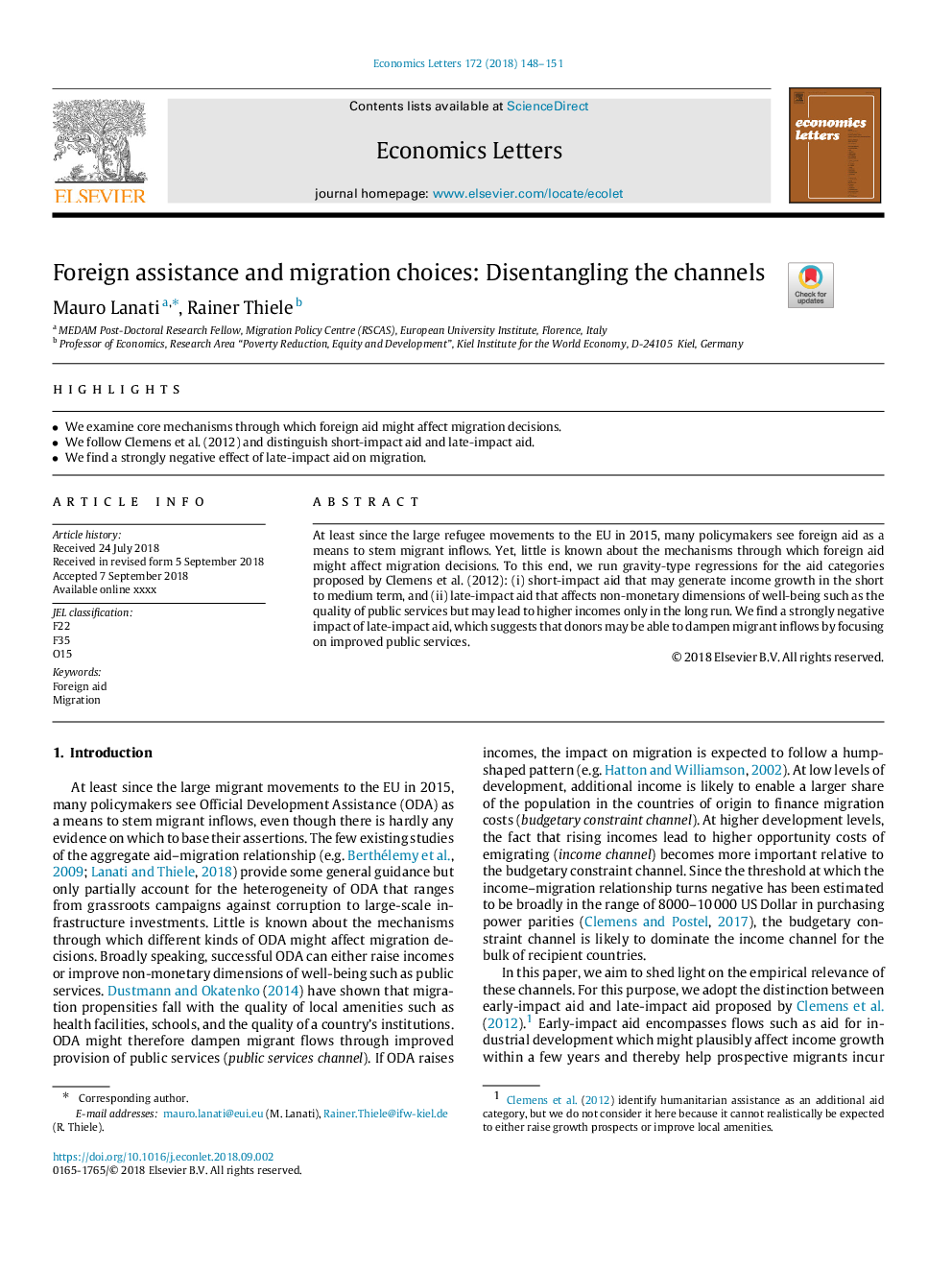| Article ID | Journal | Published Year | Pages | File Type |
|---|---|---|---|---|
| 10127744 | Economics Letters | 2018 | 4 Pages |
Abstract
At least since the large refugee movements to the EU in 2015, many policymakers see foreign aid as a means to stem migrant inflows. Yet, little is known about the mechanisms through which foreign aid might affect migration decisions. To this end, we run gravity-type regressions for the aid categories proposed by Clemens et al. (2012): (i) short-impact aid that may generate income growth in the short to medium term, and (ii) late-impact aid that affects non-monetary dimensions of well-being such as the quality of public services but may lead to higher incomes only in the long run. We find a strongly negative impact of late-impact aid, which suggests that donors may be able to dampen migrant inflows by focusing on improved public services.
Keywords
Related Topics
Social Sciences and Humanities
Economics, Econometrics and Finance
Economics and Econometrics
Authors
Mauro Lanati, Rainer Thiele,
